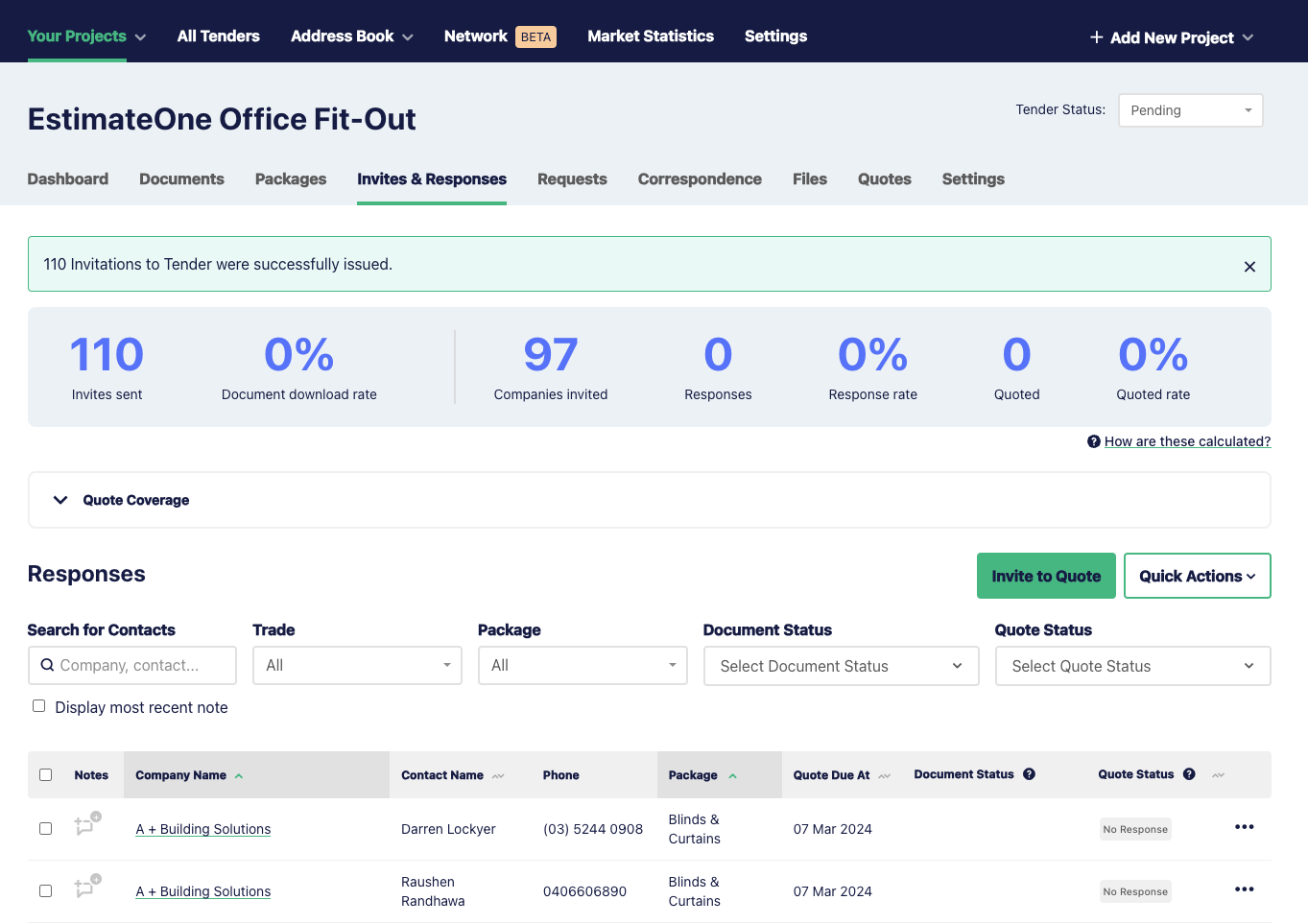Step 1 - Completing the New Project Wizard
Head to the Your Projects tab then the Tender Projects tab.
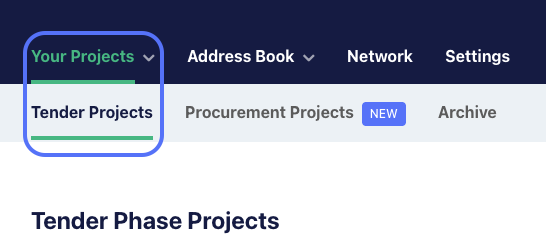
Click on ‘+ Add New Project’ and select ‘New Tender Project’
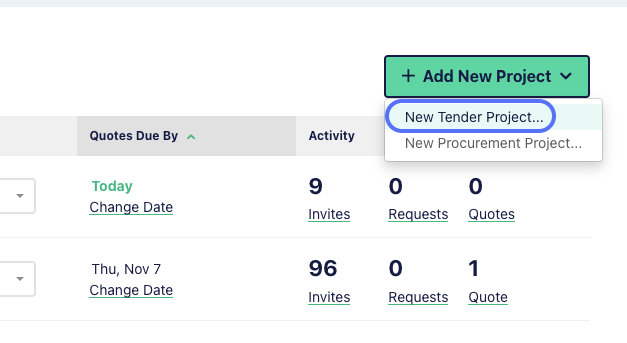
Complete the project details using the New Project Wizard.
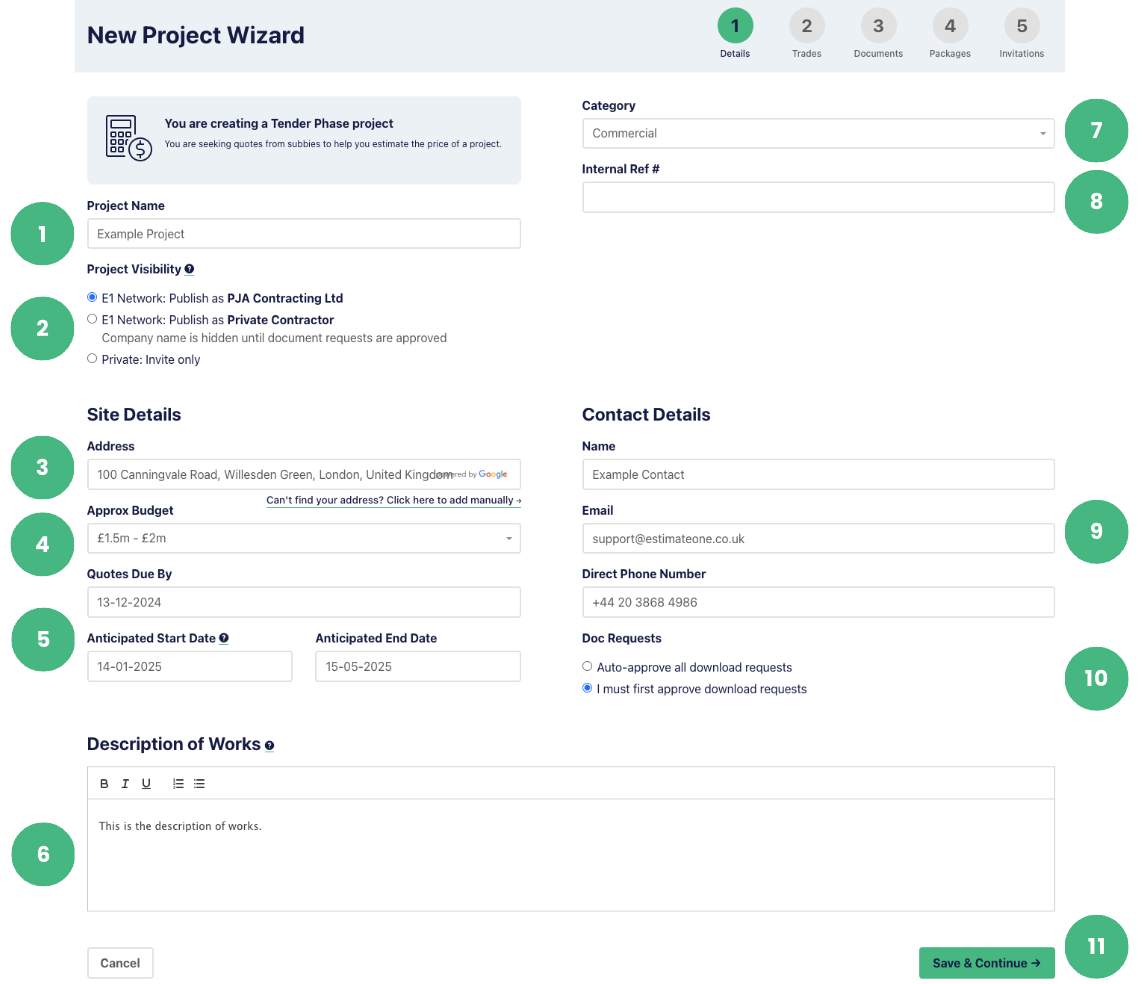
1 - Add a Project Name. If another main contractor has already created the project with a similar name, you’ll be prompted to select the existing project or continue with a new project after saving the Project Wizard
2 - There are 3 Project Visibility options to choose:
- E1 Network: Publish as [builder name]
This option will publish your project to the E1 Network with your company name visible to all subcontractors and suppliers.
- E1 Network: Publish as Private Contractor
Your company name is hidden until document requests are approved for the requesting subcontractor or supplier.
This option makes your project available to the E1 Network, with your company name set as ‘Private Contractor’, allowing subcontractors and suppliers to request packages from you. They will see your business details only when approved.
- Private: Invite Only
Your project is not discoverable by the E1 Network as it isn't published on the tender noticeboard. Subcontractors and suppliers only gain access to the project details when you send them an enquiry.
3 - Add the site address, start typing the name and select from the list, or click the ‘Can’t find your address…’ link below the Address field to add it manually.
4 - Select the total Approx Budget from the dropdown list.
5 - Add the Quotes Due By date and Anticipated Start and End Dates for the project.
6 - Add a brief Description of Works. Adding a description can be helpful for your invited companies as a quick and easy summary of the project and any important details you may want to provide at the start.
7 - Select the best-fit Category from the Category dropdown menu
8 - The Internal Ref # is an optional field for internal project numbers
9 - The logged-in user's details will automatically fill the contact details area with their Name, Email and Direct Phone Number. If you would like to change this to a different estimator, you can manually do this in the Contact Details section
10 - You can choose to make all documents available without the need to approve each download by selecting ‘Auto-approve all download requests’, in the Doc Requests section. Alternatively, you can select ’I must first approve download requests’ and will then be able to accept or reject a subcontractor or supplier’s document access on a case-by-case basis.
11 - Once you’ve completed all sections, click ‘Save & Continue’
Optional Fixed Price confirmation on private projects
Privately listed projects have the option to nominate a ‘fixed price’ confirmation.
When enabling this option, we will prompt companies to confirm whether the quote submitted on E1 is a fixed price. This will help you quickly identify which quotes are fixed and which are not on E1.
A fixed price quote is an offer to complete a project for a set price, valid for a specified period unless the project scope changes.
Head to the ‘Include Fixed Quote Confirmation’ section at the bottom of the project wizard to make your selection.

Any fixed quote submissions from subcontractors or suppliers can be identified by the phrase ‘Yes, I confirm that the quote provided is fixed and remains valid for the specified validity period stated in the quote.’ in the ‘Fixed quote confirmation’ field of the submission.
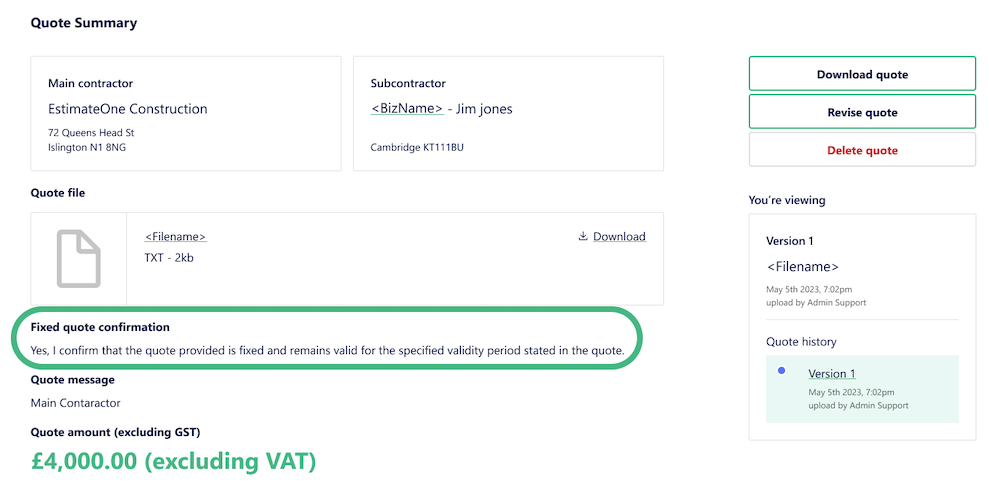
Step 2 - Confirming if a project is new or existing
If the name of your project is similar to projects that already exist on E1, you will be prompted to select from joining a current project or creating a new project.
If you see a match, add your project to the existing tender by selecting the button next to it, it will provide you insights into the projects you have publicly competed against other main contractors on, as well as maximise quote coverage as it streamlines the noticeboard for subcontractors and suppliers.
If any options shown are not the same project, select ‘No, it’s none of the above’, then click ‘Continue’.
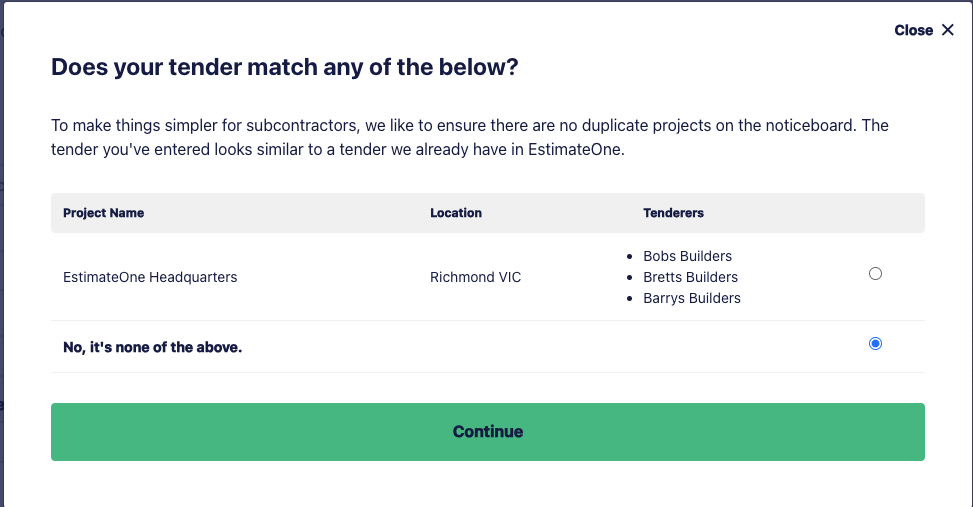
Step 3 - Trades selection
You’ll now be prompted to select all trades required for your project.
To do so, click the tick box next to each required trade. You can also ‘Select All’ or ‘Deselect All’ from a category to quickly nominate or remove all trades in that section.
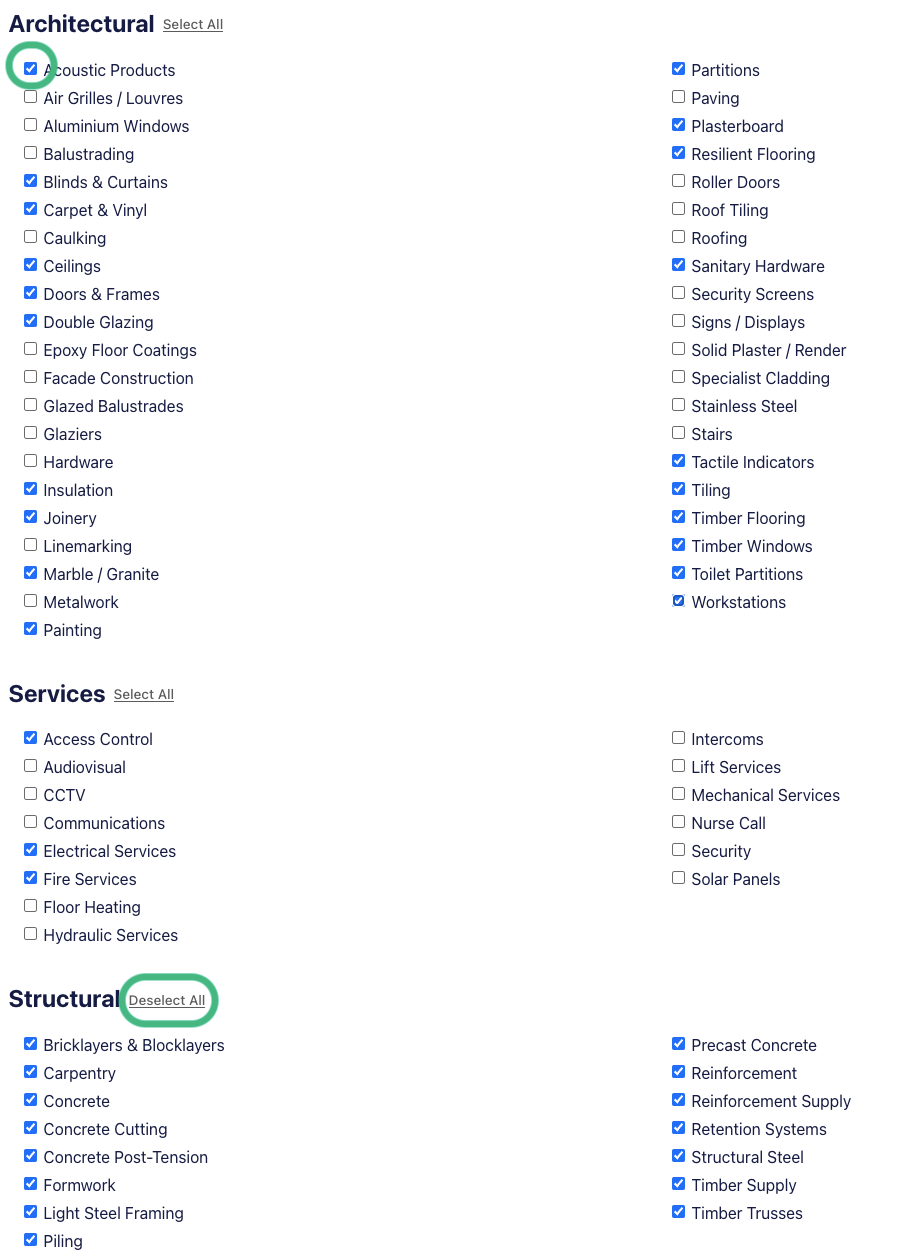
Once you have selected the necessary trades, click ‘Next Step: Documentation’
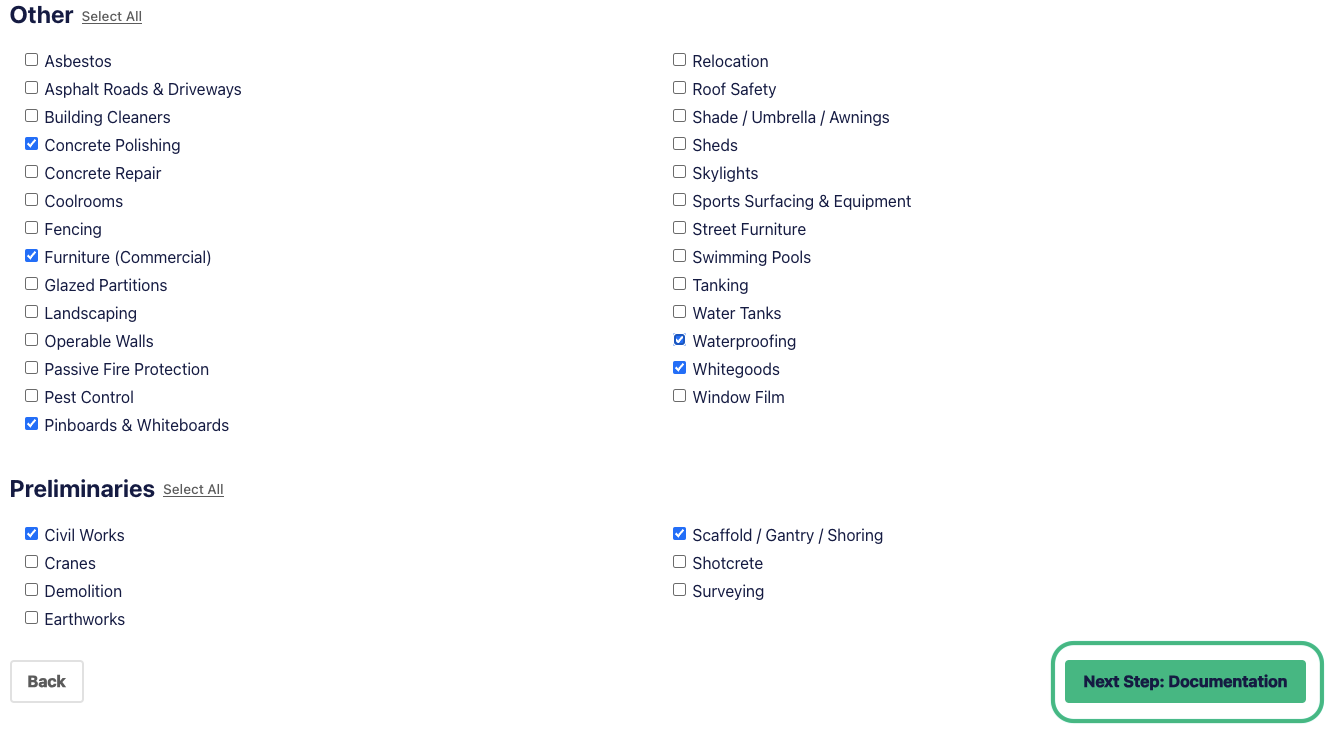
Step 4 - Adding project documents
To add documents to your project you can either drag and drop from your file explorer, or click the ‘browse files’ button to manually select them.
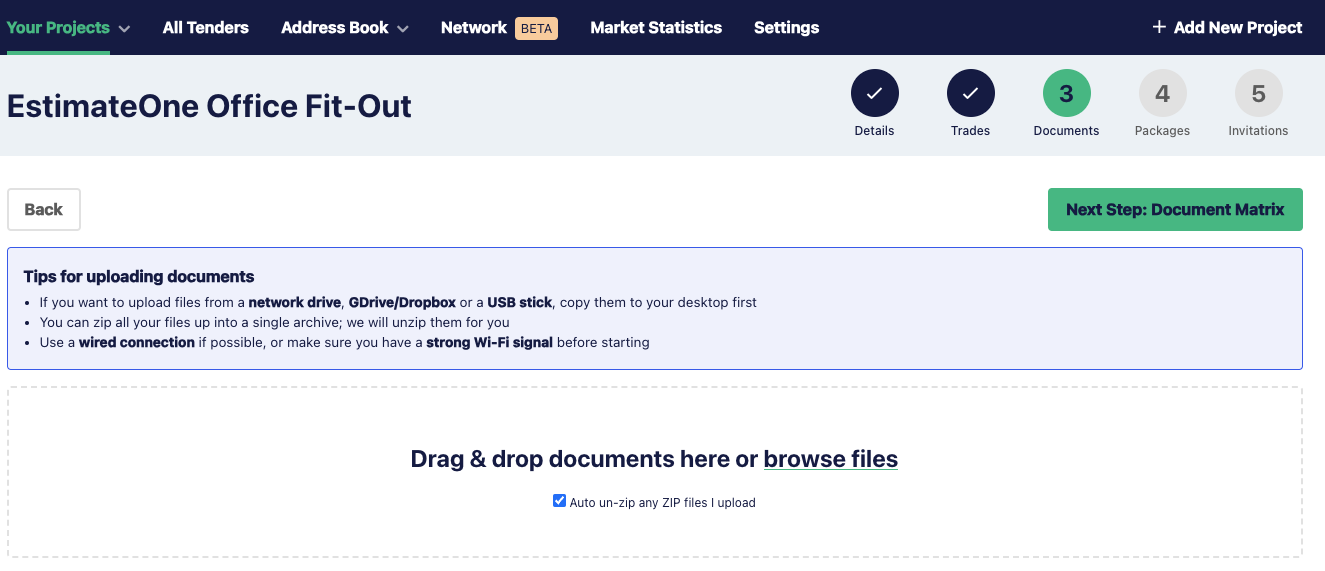
Once your documents have been added to your project, you can review and manage them. Check this article for an overview of editing options.
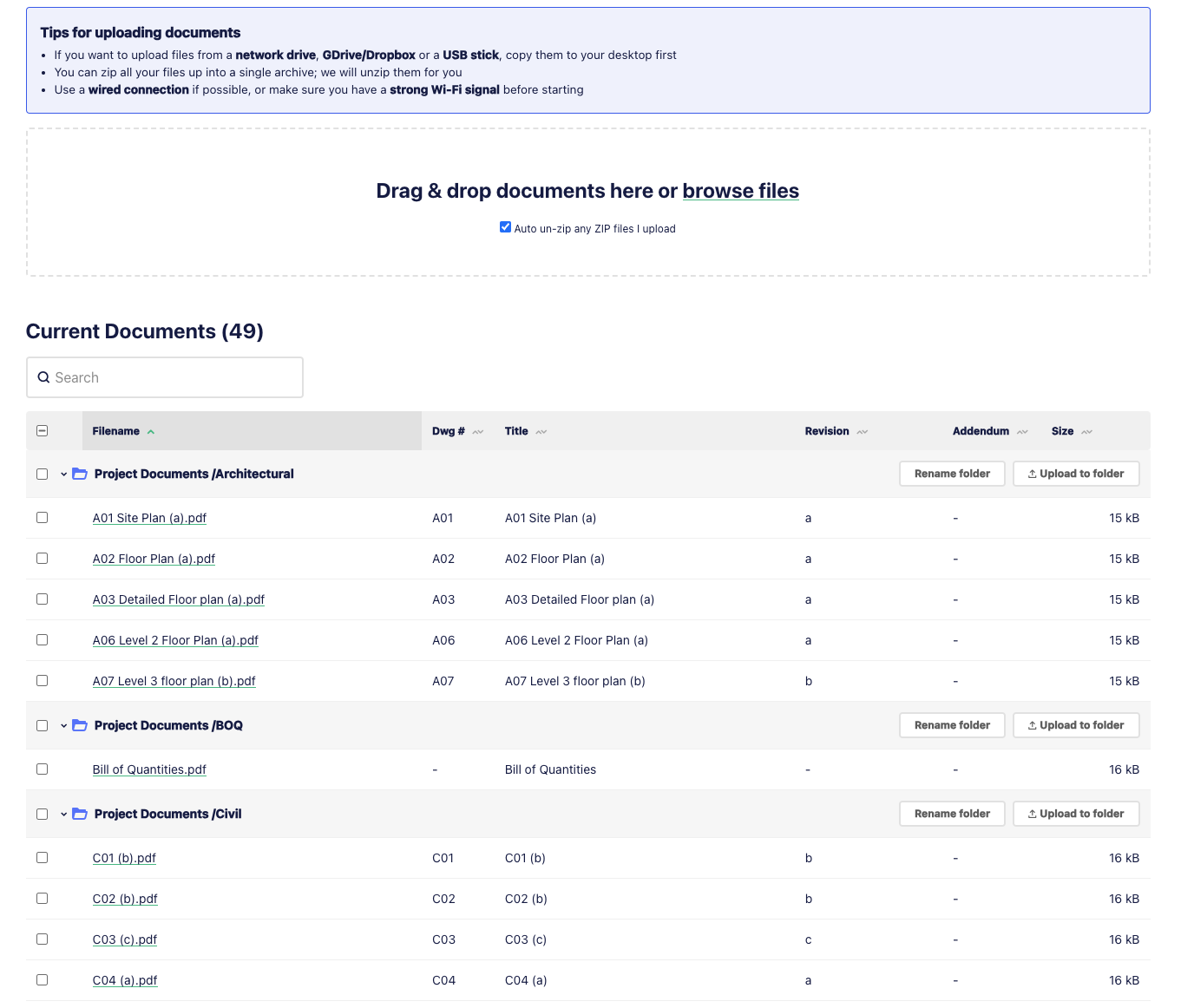
When you are happy with your document structure, click ‘Next Step: Document Matrix’
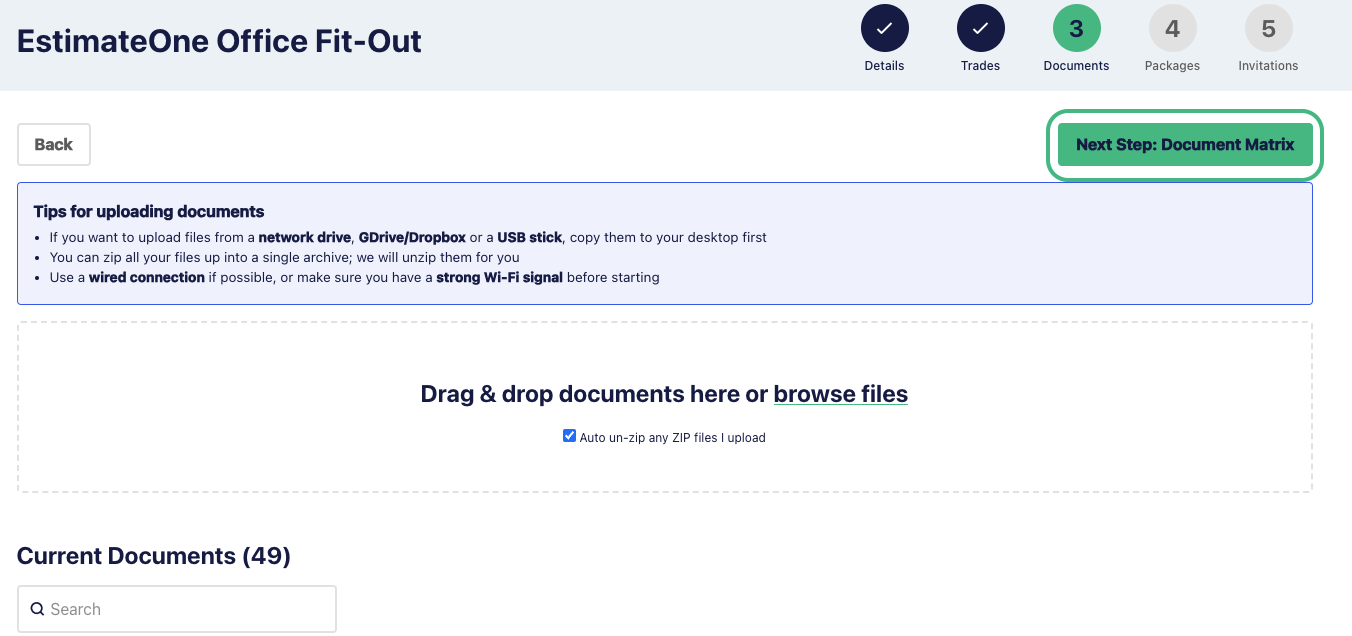
Step 5 - Creating Packages
You will be prompted to create packages based on the trades you selected earlier.
Packages make it quick and easy to send enquiries and correspondence based on a trade or package. You can deselect any trades no longer required, or keep the previously nominated packages.
When you’re happy with the selection, click ‘Create Packages’.
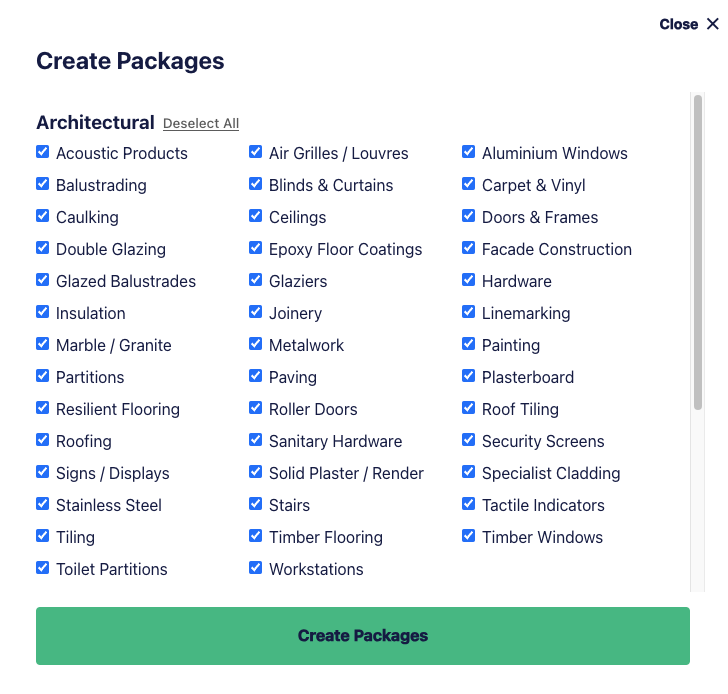
Step 6 - The Document Matrix
You can now interact with the Document Matrix by clicking the individual squares to add a document to a package
The Document Matrix allows you to select which documents will be sent to each trade discipline via the packages.
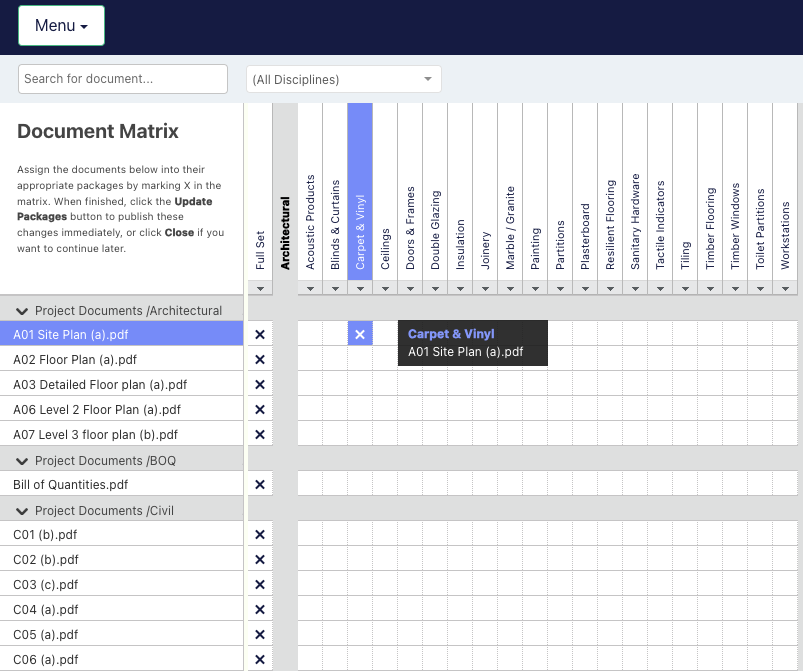
You can click and drag your cursor to select multiple documents and packages at once, and then type ‘X’ or press ‘Enter’ to add those documents to the package(s)
For more detailed instructions on the Document Matrix, click here
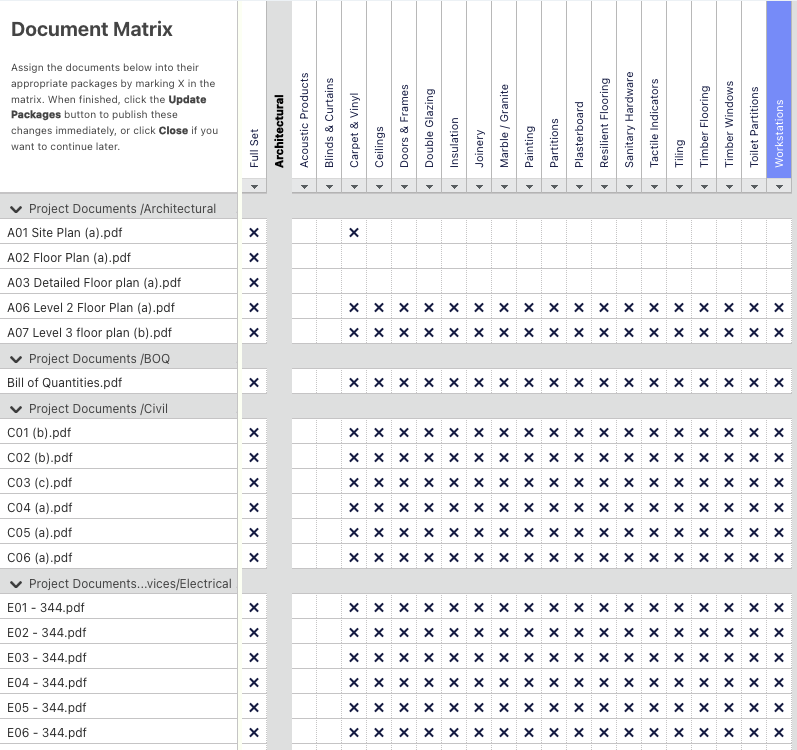
When you’ve made your selections, click on ‘Finalise Packages →’
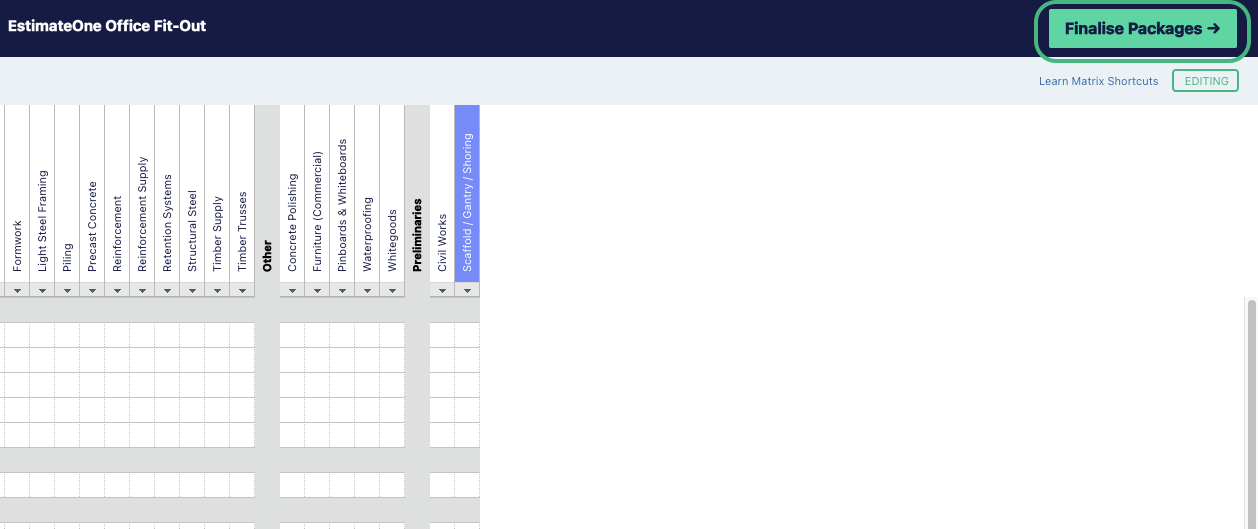
This will prompt you to confirm, click ‘Confirm Changes’.
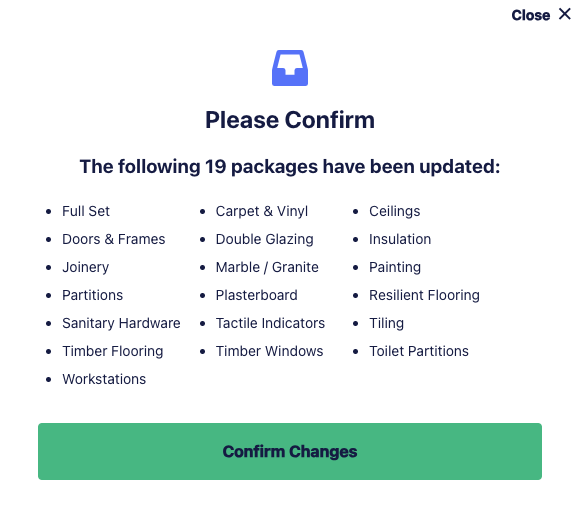
Step 7 - Sending Enquiries
You can send multiple enquiries at once through E1 by selecting the Trade from the Trade dropdown menu, and then selecting the names of the companies that you would like to invite and selecting or deselecting the associated contacts.
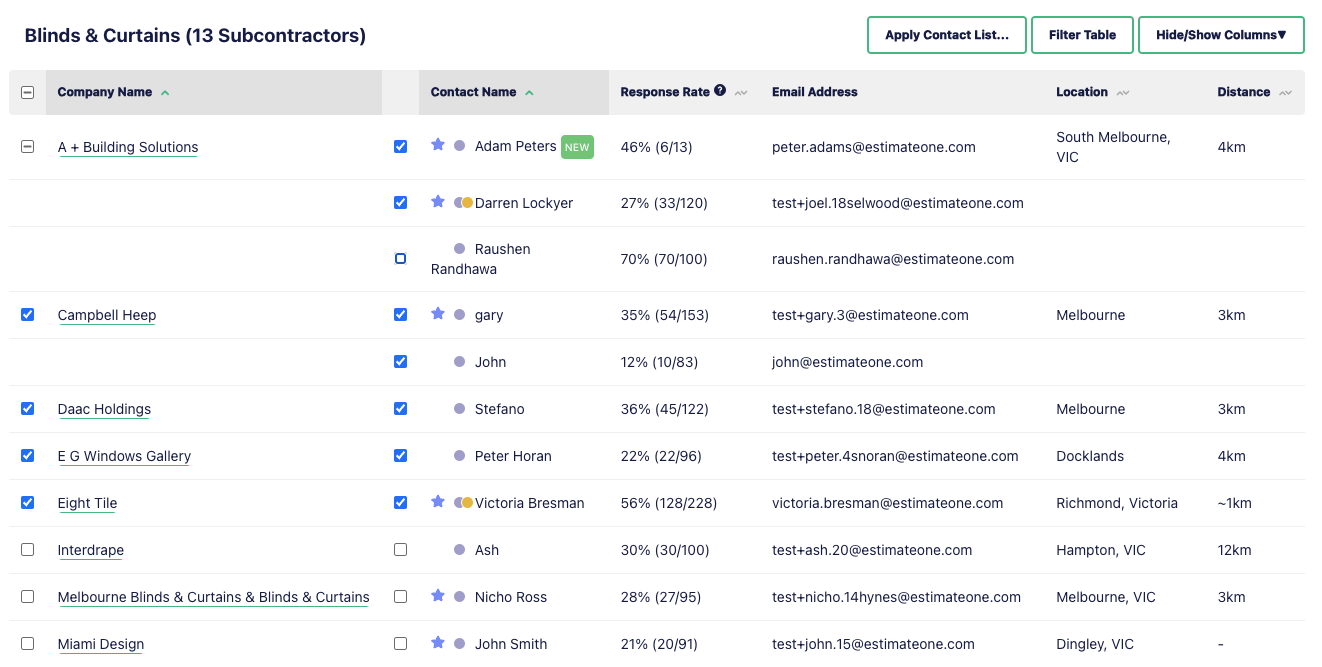
You can also select multiple contacts at once by applying a Contact List. To do this, click on ‘Apply Contact List...’
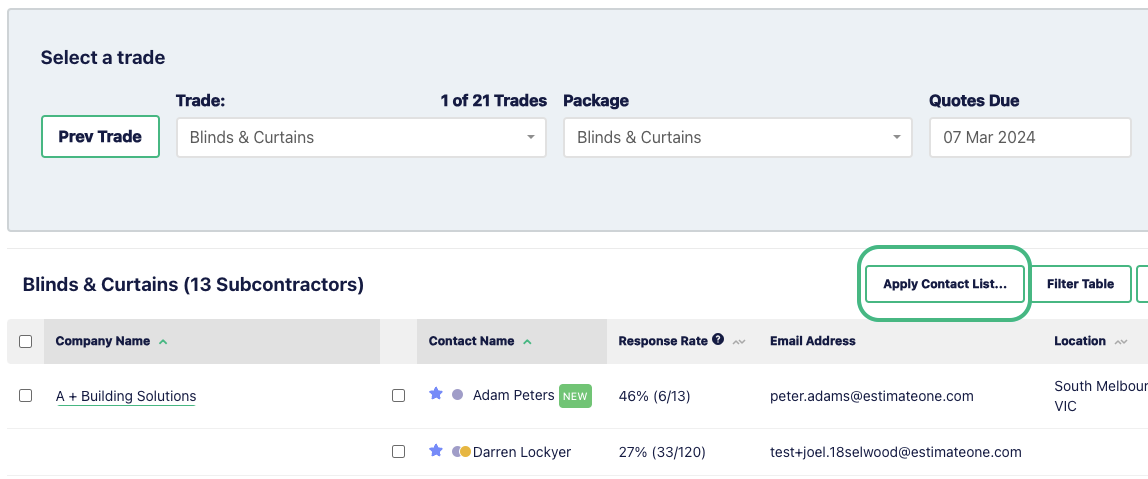
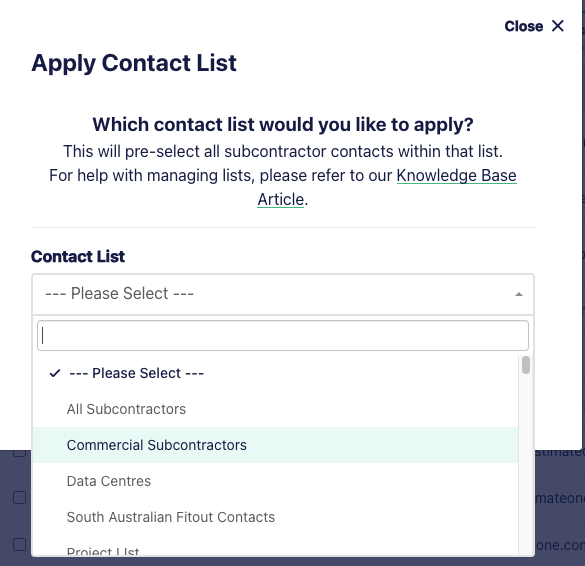
Once you have selected the applicable contact list, select ‘Apply List’. You can continue adding individual contacts after applying a list if you need to.
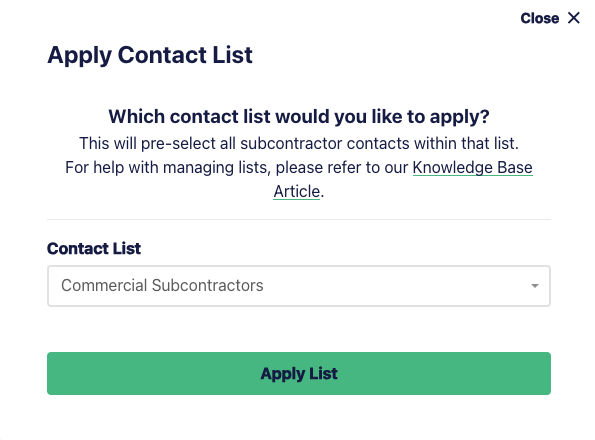
Continue inviting contacts to more trades and packages by clicking ‘Next Trade’ and repeating the above steps.
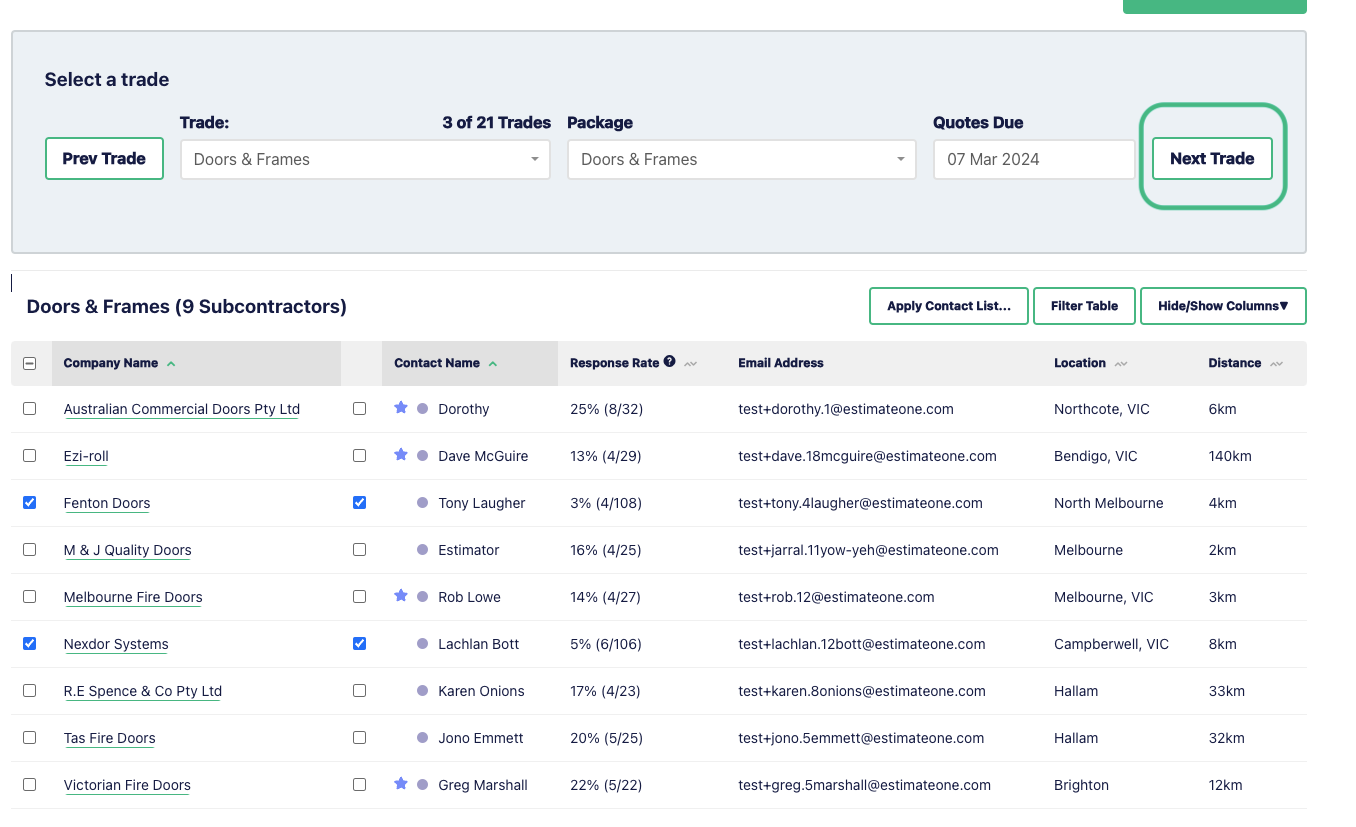
Once you have finalised the contacts you want to invite, click on ‘Issue Enquiries’, in the next screen click on ‘Yep, send invites’ to generate the enquiries.
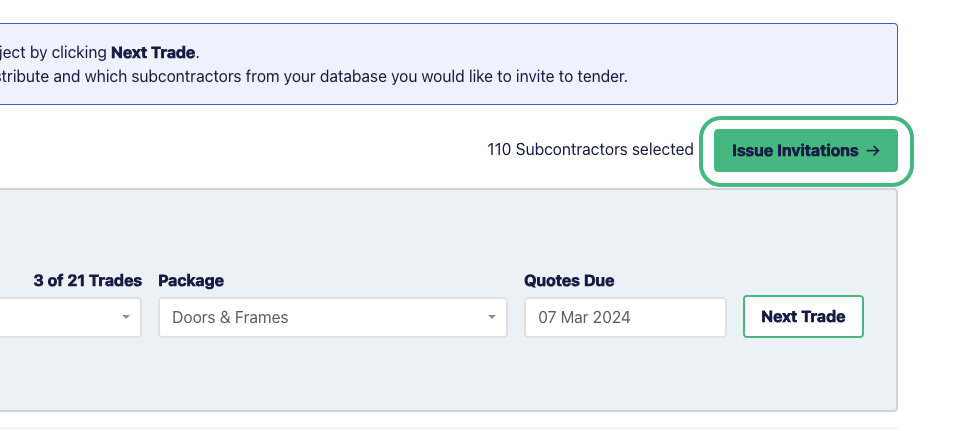
Congratulations! You have set up a project on E1!
You can now manage your project from the Your Projects tab. Happy tendering!
